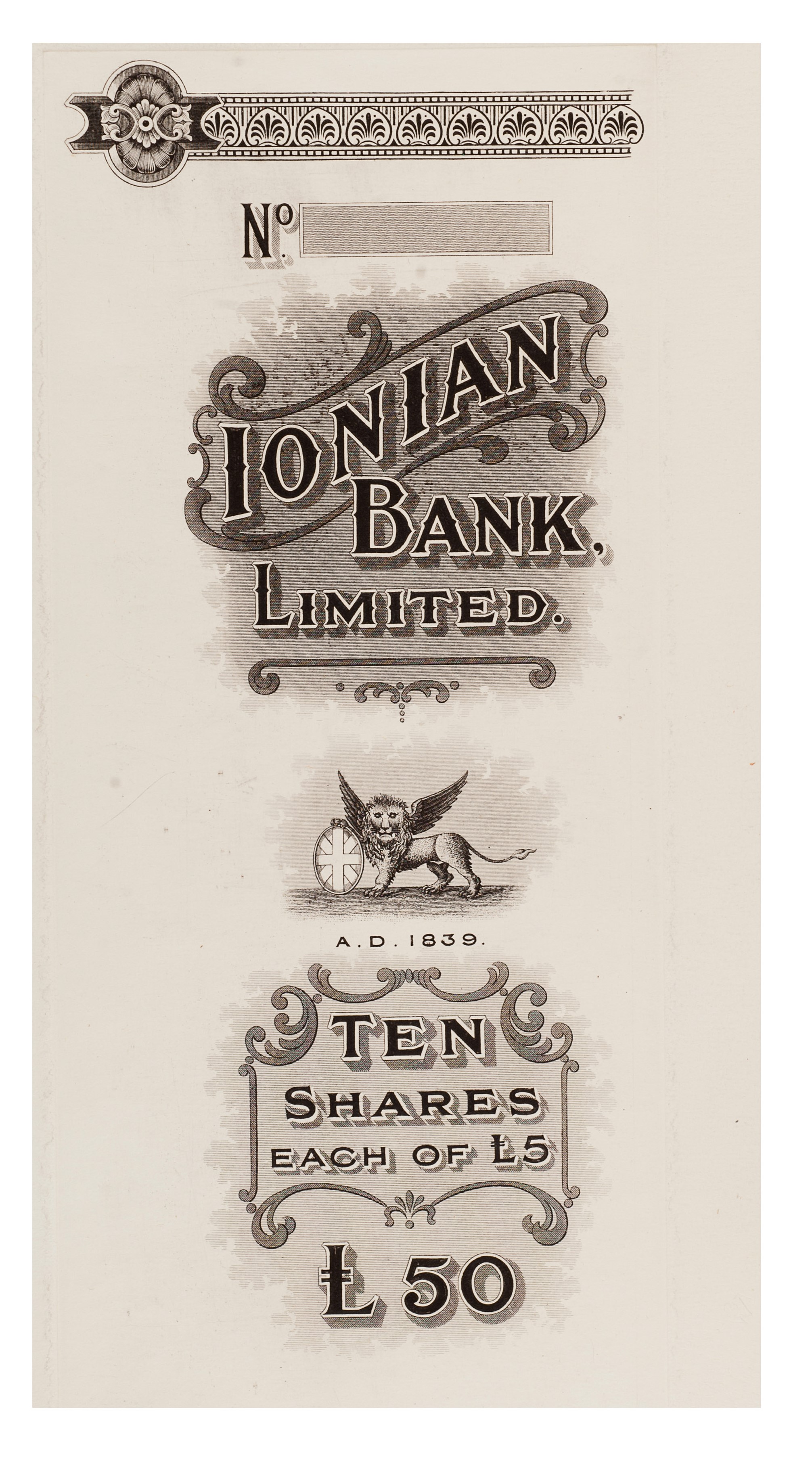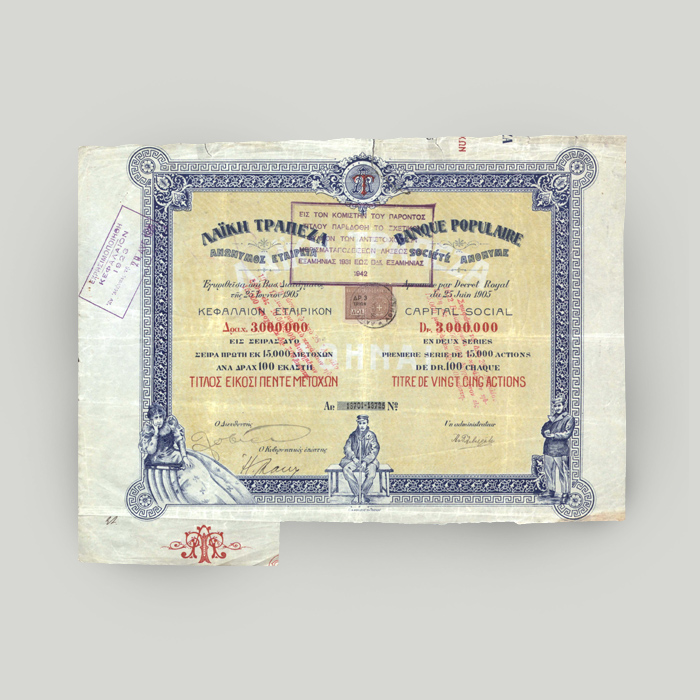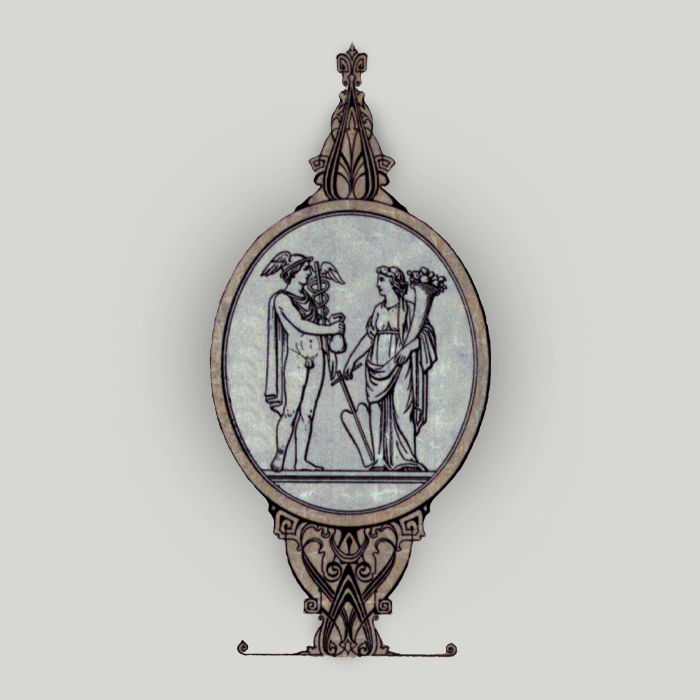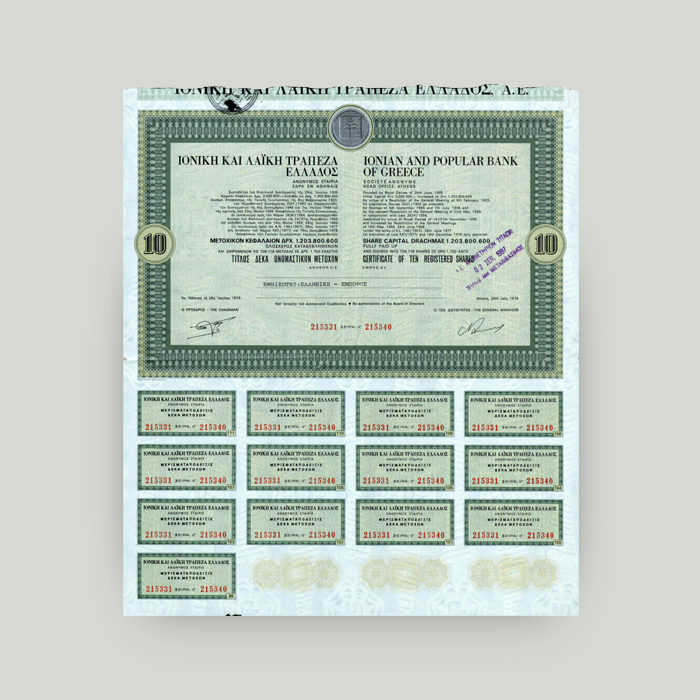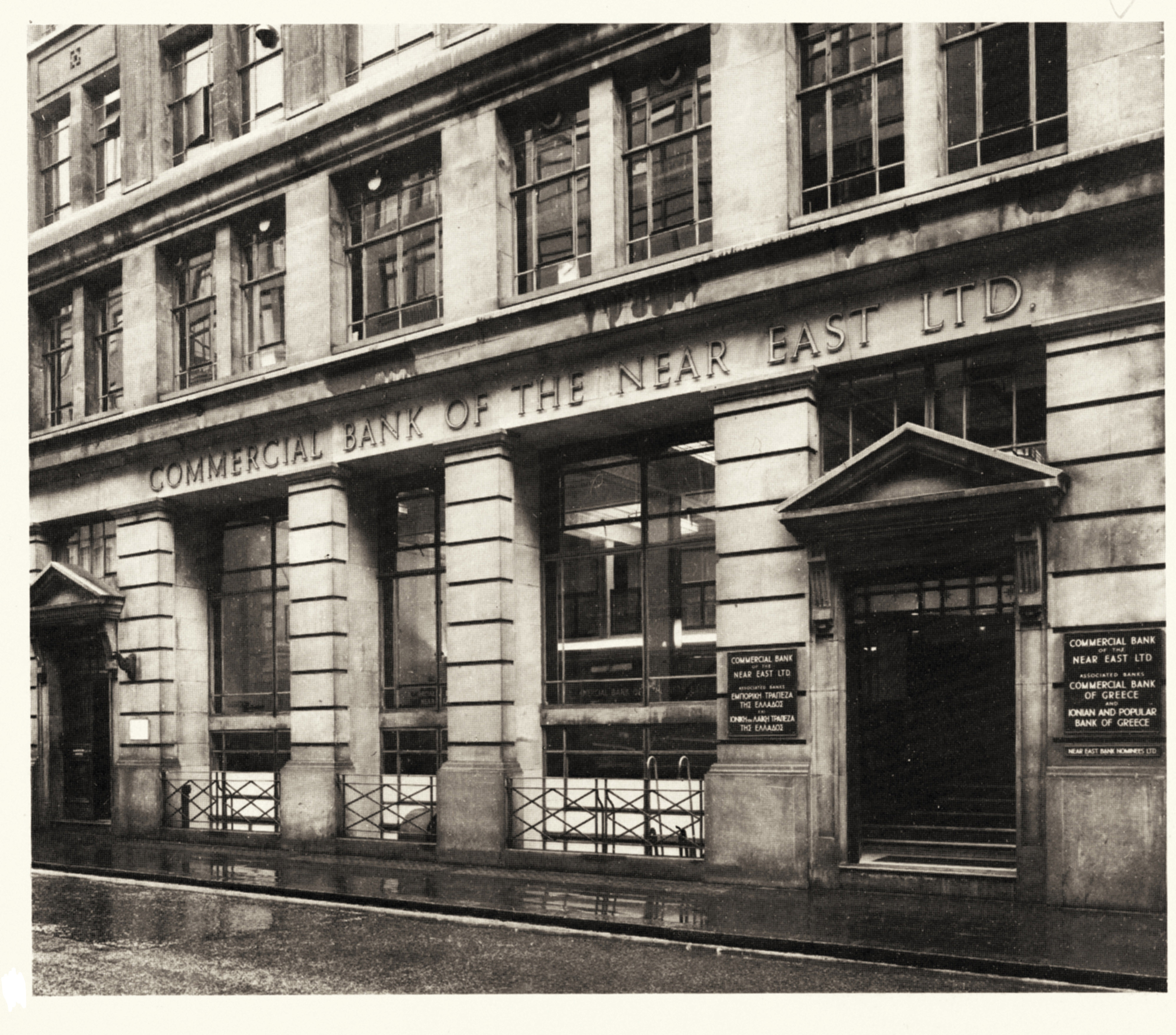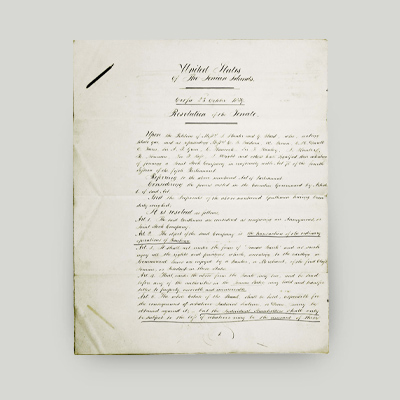Brief history of Ionian Bank Ltd
Ionian Bank was the first bank of issue in Greece. It had the sole right to issue banknotes in the Ionian islands from its establishment in 1839 and up until 1880. Ionian Bank’s 10-share stock certificate from 1880 features impressive artwork and elaborate designs.
Ionian Bank Ltd 10-share paper stock certificate to the value of 50 British pounds, issued in 1880.
The top part features a decorative design, the certificate number and the bank name.
The bottom part depicts a winged lion and a coat of arms, the year the bank was established (1839) and the security value in English: TEN SHARES EACH OF L5 (5 pounds).
A private bank in the Ionian Islands
In 1838 Sir Howard Douglas, Lord High Commissioner of the Ionian Islands, and John Wright, head of a London-based association of bankers and merchants, took the initiative to establish a private bank in the Ionian Islands.
John Wright and the local government of the islands entered into a lengthy negotiation process. Negotiations mainly focused on setting the legal framework that would govern the new bank’s operation.
On 23 October 1839, the Lord High Commissioner issued and validated a resolution passed by the Senate of the Ionian Islands, by which Ionian Bank was founded. The newly-established bank was based in London and had a share capital of 100,000 pounds.
To define the bank’s legal entity structure, it was necessary to obtain approval by the competent British authorities. The relevant royal decree was indeed issued in January 1844.
The first bank of issue in Greece
Ionian Bank began operating in the Ionian Islands on 1 March 1840. It was the first bank of issue to ever operate in Greece.
The bank was granted the sole right to issue banknotes (paper money) in the Islands for 20 years. Its founding principles also included promoting easier commercial transactions and combating the practice of usury.
The first banknote circulated by Ionian Bank was in Spanish dollars, also known at the time as columnarios. Denominations included 2, 5 and 100 columnarios.
In 1860 Ionian Bank renewed its status as a bank of issue for another 20 years. In the same year, the Ionian Parliament decided that the Bank could issue banknotes to the amount of 3 times its reserve in pounds sterling.
From columnarios to drachmas
With the 1864 Treaty of London, Britain ceded the Ionian Islands to the Kingdom of Greece.
Ionian Bank then became the second bank of issue in the country, alongside the National Bank of Greece. The bank soon withdrew the banknotes in columnarios and replaced them with new banknotes in drachmas.
In 1880 Ionian Bank once more renewed its status as a bank of issue until 1905. However, it was no longer the only banking institution in the Ionian. The banknotes issued by Ionian Bank were legally equivalent to those issued by the National Bank of Greece.
Restructuring into a public company
Ionian Bank was one of the very few banks operating by royal decree into the late 19th century.
In 1880 its legal status in London changed; the Bank was now a public limited liability company subject to British company law.
It was voluntarily converted to a limited company in 1883.
In 1905 Ionian Bank secured the last renewal of its status as a bank of issue, a right the bank permanently gave up in 1920.
Presence in the Eastern Mediterranean
In 1907 Ionian Bank opened a branch in Alexandria, Egypt. At the same time, it started building a network of branches and agencies at the most important regional hubs of Egypt. This aimed at more effectively controlling the cotton production industry.
After 1920 the Bank focused exclusively on its commercial activities. By that time, its network consisted of 13 branches all over Greece.
In 1922 Ionian Bank took over the branch previously owned by Guaranty Trust Company of New York in Istanbul. This aimed at financing commercial activities between Turkey and Egypt.
In 1926 Ionian Bank expanded its operations to Cyprus and opened a branch in Nicosia.
The end of an era for Ionian Bank
Ionian Bank acquired Popular Bank in 1938.
In 1957 Emporiki Bank acquired all the undertakings that belonged to Ionian Bank and Popular Bank in Greece. Popular Bank then absorbed Ionian Bank, resulting in the establishment of the new Ionian and Popular Bank.
Alpha Credit Bank acquired Ionian and Popular Bank in 1999 and absorbed it over the following year. The resulting enlarged bank was renamed Alpha Bank.
Ionian Bank’s collection of debt securities
The Ionian Bank Ltd 10-share stock certificate from 1880 belongs to Ionian Bank’s collection of rare debt securities, shares and bonds.
Exhibits date mainly from the late 19th and early 20th century. The collection is the result of Ionian Bank’s multifaceted activity in Greece as both a bank of issue and a commercial bank.
The items of the collection – mostly paper ones – preserve financial data and feature impressive, elaborate artwork.
Ionian Bank in our publications
You can find more information on Ionian Bank in the Alpha Bank publications:
- The Ionian Bank and Its Privilege of Issue (1839-1920), edited by Kostas Kostis, on the history of Ionian Bank’s privilege to issue currency.
- The Ionian Bank: An Imperial Institution, 1839-1864 by Philip L. Cottrell. The book presents the history of Ionian Bank from its establishment to the union of the Ionian Islands with Greece.
Buy the publication The Ionian Bank: An Imperial Institution, 1839-1864 on the Alpha Bank e-shop. - Papers of the Ionian Bank Limited by Zoë Browne, a catalogue of the Ionian Bank archives at the London School of Economics library.
- The Note-Issuing Privilege of the Ionian Bank 1839-1920 by Vasilis Mitsis, covering the period during which the bank enjoyed and exercised the right to issue currency.
Buy the publication The Note-Issuing Privilege of the Ionian Bank 1839-1920 on the Alpha Bank e-shop.
The Alpha Bank Historical Archives are not open to the public.
Research visits can be organised upon request.
Contact us to request a visit.
